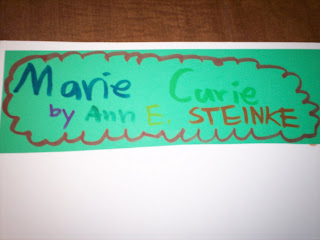
E9 has been a busy student reading about Marie Curie's early life and studying some geography of the region. He started his notebook pages so we'll share some here. Our notes on this study will be here and there and we hope to finish by the end of October.
Each week he does several assignments per chapter in addition to his weekly spelling work and his dictation. Usually once a week (sometimes twice) he copies down several paragraphs of the text while I read it to him. He's getting pretty good at plowing on through. The text is chosen based on the grammar concepts that I'd like to work on with him. When the passage is complete, we go over his writing and misspellings are pointed out. His punctuation, particularly the use of commas, is coming right along. Typically he places them just right based on how the passage is read and if he's missing one I just need to say, "You know that sentence actually has three commas." Then he'll take a look and add missing comma into the correct place. I wasn't sure about this method of teaching grammar, but I'd have to say it is working very well for E9. We use a book called Learning Grammar through Writing for our scope and sequence. Later in the week, he has to correct any misspelled words and answer questions or make lists, etc. based on the grammar concepts of the week. For example, today he had to correct two misspelled words which in this case lead to a discussion about the word medal vs. metal. That was a hot debate...whether medal even existed though I assured him it did! He identified why the word "and" in one sentence was italicized. He wasted no time in telling me it is for emphasis. We reviewed why there are commas in the long version of writing out dates. The one thing we may need to tweak is his definition of nervous breakdown. His reads, "When a person is having one, they freak out." I'll have to check on that!
He's been working on learning a little about Russian Czars and a lot about lakes. Here are some more notebook pictures. I'm still working on training this new photographer so bear with us!
This page details what a lake is, how they are formed, and how we use them.

Lists of man made vs. natural lakes.

E9 made a book on the world's largest lakes both fresh and salt water. He made cards for each one telling the name and its location.






1 comment:
I am really enjoying reading your blog. AND, I'm really considering Beyond FIAR for my 8 yo daughter - thanks to you and your blog! :-)
Post a Comment